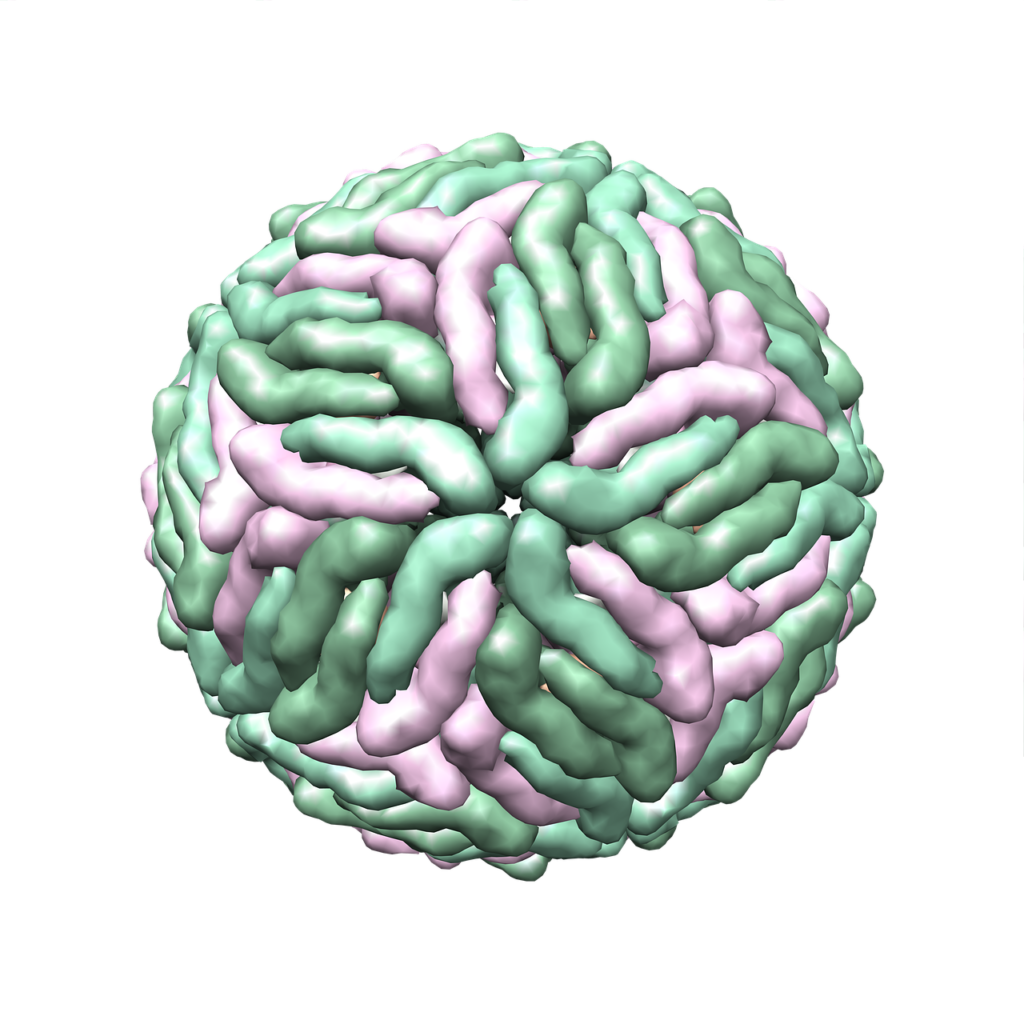
Dengue virus
Geneva/Dhaka: Although dengue is endemic in Bangladesh, the current dengue surge is unusual in terms of seasonality and the early sharp increase in comparison to previous years, where the surge started around -late June, the World Health Organization (WHO) stated today.
The dengue risk at the national level is assessed as ‘High’ due to the ongoing rapidly increasing number of cases and deaths with the peak not yet reached, the high case fatality rate (CFR) compared to the previous years and the increasing geographical distribution of cases.
From January 1 to August 7, 2023, the Ministry of Health and Family Welfare of Bangladesh reported a total of 69, 483 laboratory-confirmed dengue cases and 327 related deaths, with a CFR of 0.47%. Of these, 63% of cases and 62% of deaths were reported in July 2023. The reported number of dengue cases this year is the highest compared to the same periods recorded since 2000. WHO warned that the peak is “unlikely to have been reached”.
Dengue cases started to rise in May 2023 in Bangladesh and have been continuing since then. However, it may be noted that as of June 30, 2023, a total of 7978 cases and 47 deaths were reported, however, the cases started surging rapidly from late June and in July alone 63% of cases (n=43 854) and 62% of deaths (n= 204) were reported.
The case fatality rate so far this year is relatively high compared to previous years for the full-year period. The pre-monsoon Aedes survey shows that the density of mosquitoes, and the number of potential hotspots is at the highest level in the past five years.
“The higher incidence of dengue is taking place in the context of an unusual episodic amount of rainfall, combined with high temperatures and high humidity, which have resulted in an increased mosquito population throughout Bangladesh,” WHO explained.
Dengue cases, deaths, and case fatality rate in Bangladesh for 2018, 2019, 2021, 2022 and 2023

The number of cases and deaths in Bangladesh is higher compared to similar periods in the past five years. The cases are reported from all 64 districts in the country. Cases in the Dhaka division started to increase in epidemic week 17 (23-29 April 2023) and in all eight divisions since epidemic week 26 (25 June to 1 July 2023). The most affected area in the Dhaka division is Dhaka city corporation, accounting for 52.8% of cases and 78.9% of deaths. Other affected divisions include Chattogram division (13.2% of cases and 9.2% of deaths), Dhaka division excluding Dhaka city (11.6% of cases and 2.8% of deaths), and Barisal division (10.5% of cases and 4.3% of deaths). The Sylhet division has the lowest number of cases (560) and no deaths reported so far.
On further analysis, the overall CFR is higher in females than in males (0.72% v 0.32%) with females having four times higher CFR than males among those aged 21-40 years (0.71% vs 0.18%). The older age group recorded a higher CFR compared to the younger age group (1.87% in the age group over 60 years compared to 0.74% in the age group between 41 to 60 years and 0.34% in those aged 40 years and below).
The high number of reported cases has put pressure on the health systems of the country due to the very high number of admissions for dengue; high vector density; and an anticipated prolonged monsoon. Therefore, six hospitals assigned for the management of COVID-19 patients in Dhaka city have been repurposed for dengue case management by the Directorate General of Health Services. Additionally, dedicated dengue wards/dengue corners have been established in Medical College hospitals. The hospital-based surveillance system is actively collecting regular information from 57 hospitals in Dhaka city as well as all Upazila and district-level hospitals. Daily reports are also disseminated through the Health Emergency Operation Center (HEOC). A total of 184 000 non-structural protein (NS1) diagnostic kits have been distributed to all Upazila health complexes, district hospitals and medical college hospitals.
Dengue virus (DENV) has four serotypes (DENV-1, DENV-2, DENV-3, DENV-4). Infection with one serotype provides long-term immunity to the homologous serotype but not to the other serotypes; sequential infections with a different serotype put people at greater risk for severe dengue. Many DENV infections produce only mild flu-like illness and over 80% of cases are asymptomatic.
All four serotypes of the dengue virus have been reported in Bangladesh with the predominance of DENV 1 and DENV2 until 2016. Since 2019, when the largest dengue outbreak was reported, DENV3 has been the predominant serotype, while this year DENV2 has become the predominant serotype, which, WHO warned, may result in higher numbers of severe cases as a result of a second infection with a heterologous serotype.
A dengue vaccine has not been approved in Bangladesh. WHO said there is no specific treatment for cases and clinical management is based on supportive therapy however, the early detection of infection and appropriate clinical management of patients can reduce the severity of disease and mortality The prevention and control of dengue depends on vector control.
Dengue is a viral infection transmitted to humans through the bite of infected mosquitoes and is found in tropical and sub-tropical climates worldwide, mostly in urban and semi-urban areas. The primary vectors that transmit the disease are Aedes aegypti mosquitoes and, to a lesser extent, Aedes albopictus. The disease was first recorded in the 1960s in Bangladesh (then known as East Pakistan) and was known as “Dacca fever”. Since 2010 cases of dengue appear to coincide with the rainy season from May to September and higher temperatures. Bangladesh’s climate conditions are becoming more favourable for the transmission of dengue and other vector-borne diseases including malaria and chikungunya virus due to excessive rainfall, waterlogging, flooding, rise in temperature and the unusual shifts in the country’s traditional seasons.
– global bihari bureau





